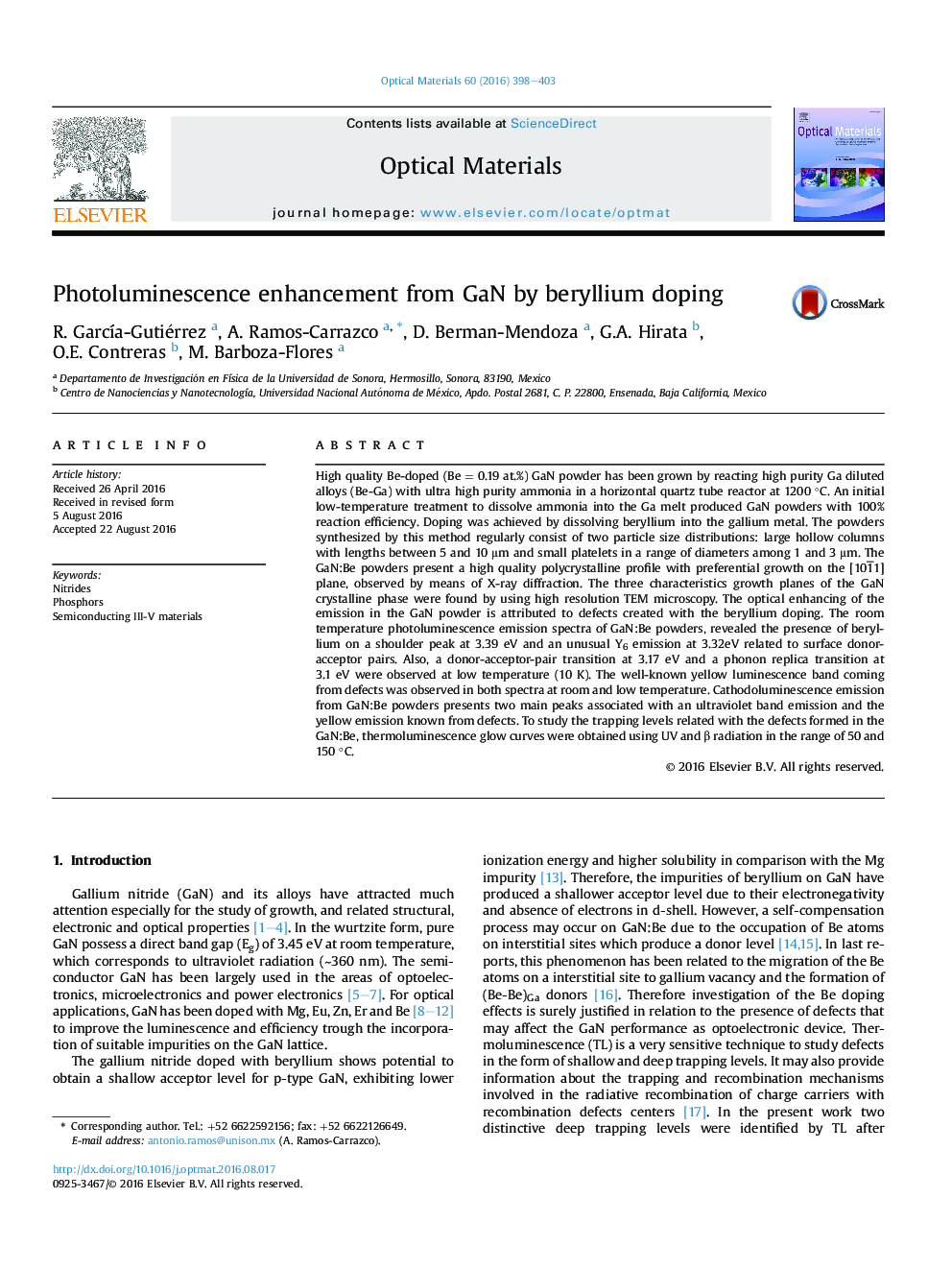| کد مقاله | کد نشریه | سال انتشار | مقاله انگلیسی | نسخه تمام متن |
|---|---|---|---|---|
| 1493237 | 1510774 | 2016 | 6 صفحه PDF | دانلود رایگان |
عنوان انگلیسی مقاله ISI
Photoluminescence enhancement from GaN by beryllium doping
دانلود مقاله + سفارش ترجمه
دانلود مقاله ISI انگلیسی
رایگان برای ایرانیان
موضوعات مرتبط
مهندسی و علوم پایه
مهندسی مواد
سرامیک و کامپوزیت
پیش نمایش صفحه اول مقاله

چکیده انگلیسی
High quality Be-doped (Be = 0.19 at.%) GaN powder has been grown by reacting high purity Ga diluted alloys (Be-Ga) with ultra high purity ammonia in a horizontal quartz tube reactor at 1200 °C. An initial low-temperature treatment to dissolve ammonia into the Ga melt produced GaN powders with 100% reaction efficiency. Doping was achieved by dissolving beryllium into the gallium metal. The powders synthesized by this method regularly consist of two particle size distributions: large hollow columns with lengths between 5 and 10 μm and small platelets in a range of diameters among 1 and 3 μm. The GaN:Be powders present a high quality polycrystalline profile with preferential growth on the [101¯1] plane, observed by means of X-ray diffraction. The three characteristics growth planes of the GaN crystalline phase were found by using high resolution TEM microscopy. The optical enhancing of the emission in the GaN powder is attributed to defects created with the beryllium doping. The room temperature photoluminescence emission spectra of GaN:Be powders, revealed the presence of beryllium on a shoulder peak at 3.39 eV and an unusual Y6 emission at 3.32eV related to surface donor-acceptor pairs. Also, a donor-acceptor-pair transition at 3.17 eV and a phonon replica transition at 3.1 eV were observed at low temperature (10 K). The well-known yellow luminescence band coming from defects was observed in both spectra at room and low temperature. Cathodoluminescence emission from GaN:Be powders presents two main peaks associated with an ultraviolet band emission and the yellow emission known from defects. To study the trapping levels related with the defects formed in the GaN:Be, thermoluminescence glow curves were obtained using UV and β radiation in the range of 50 and 150 °C.
ناشر
Database: Elsevier - ScienceDirect (ساینس دایرکت)
Journal: Optical Materials - Volume 60, October 2016, Pages 398-403
Journal: Optical Materials - Volume 60, October 2016, Pages 398-403
نویسندگان
R. GarcÃa-Gutiérrez, A. Ramos-Carrazco, D. Berman-Mendoza, G.A. Hirata, O.E. Contreras, M. Barboza-Flores,